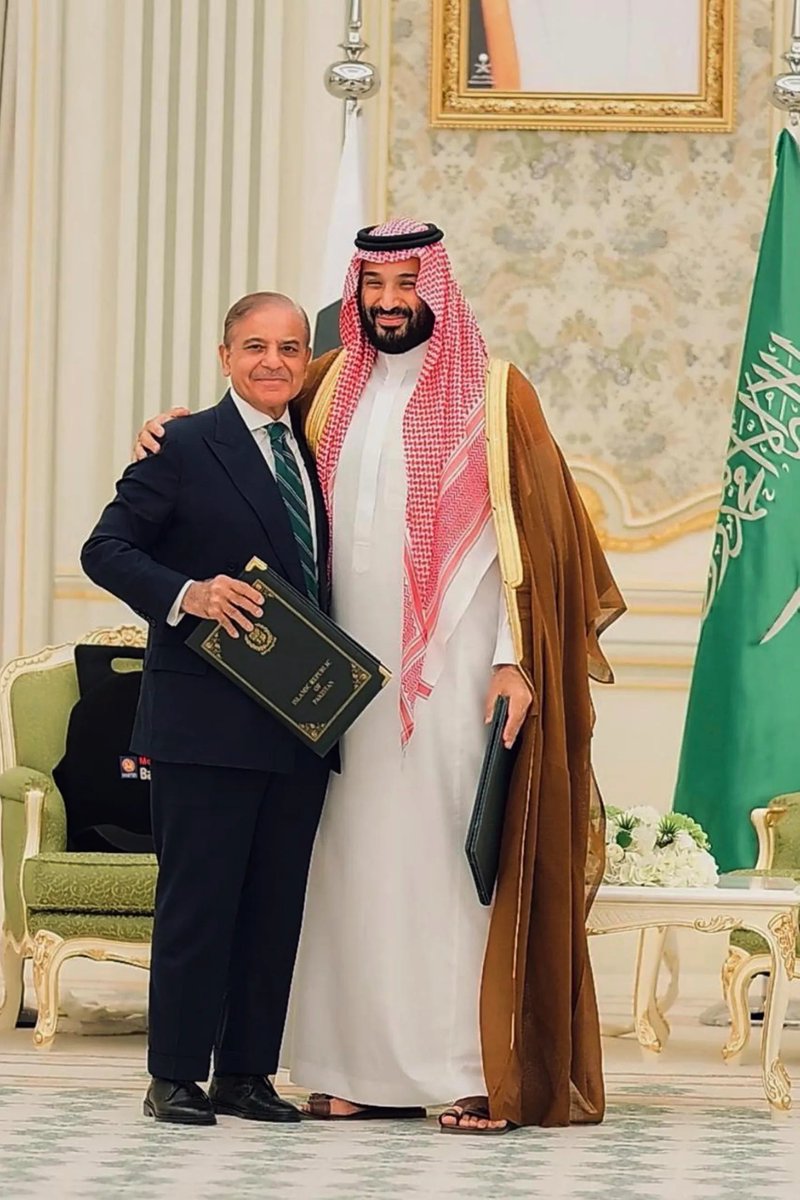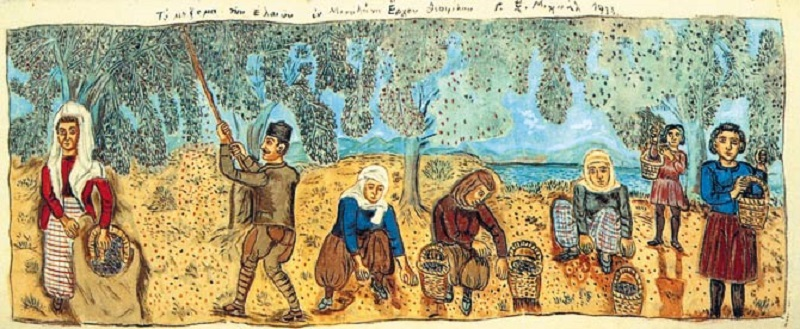The Saudi–Pakistani mutual defense pact is unprecedented.
Both have now committed in writing to defend one another. Which was kept strategically vague for decades.
But what is this treaty really, and how does it fit into the big picture?
[THREAD]🧵

Both have now committed in writing to defend one another. Which was kept strategically vague for decades.
But what is this treaty really, and how does it fit into the big picture?
[THREAD]🧵


2/x
The first trait: it’s bilateral.
Bilateral = two parties, one-on-one. The deal runs only between Riyadh and Islamabad. Between them alone, so this isn't the start of some multipolar NATO.
Benefits is its direct, fast, and personal, which allows quick responses to crisis.
The first trait: it’s bilateral.
Bilateral = two parties, one-on-one. The deal runs only between Riyadh and Islamabad. Between them alone, so this isn't the start of some multipolar NATO.
Benefits is its direct, fast, and personal, which allows quick responses to crisis.

3/x
Benefits of bilateral: clarity and speed. If one is hit, the other knows who’s on the line. No waiting for a committee.
The alliance looks tighter because there are no other voices to dilute it. And decision making loops, info sharing, and policy may be faster.
Benefits of bilateral: clarity and speed. If one is hit, the other knows who’s on the line. No waiting for a committee.
The alliance looks tighter because there are no other voices to dilute it. And decision making loops, info sharing, and policy may be faster.

4/x
Downsides to bilateral defense pacts: no brakes, no mediators, no way to share burdens.
A bilateral pact can entrap you in your partner’s quarrels. Because every crisis flows straight into your lap.
Multilaterals can absorb shock. Bilateral pacts don't easily.
Downsides to bilateral defense pacts: no brakes, no mediators, no way to share burdens.
A bilateral pact can entrap you in your partner’s quarrels. Because every crisis flows straight into your lap.
Multilaterals can absorb shock. Bilateral pacts don't easily.

5/x
That's way different with muliination defense mutual defense pacts. Like NATO.
Disputes are routed through the North Atlantic Council, ritualized consultation, and an integrated command. That bureaucracy is a mediator.
In a bilateral, there’s no brake, only the driver and the cliff. And if one nation has greater leverage over the other? Its a pretty steep one.
That's way different with muliination defense mutual defense pacts. Like NATO.
Disputes are routed through the North Atlantic Council, ritualized consultation, and an integrated command. That bureaucracy is a mediator.
In a bilateral, there’s no brake, only the driver and the cliff. And if one nation has greater leverage over the other? Its a pretty steep one.

6/x
And this effects escalation of geopol crisis in the MENA region. Thresholds matter.
Multination defense pacts can turn an incident into an agenda item.
A Saudi–Pakistan one turns an incident into a test of will. The escalatory ladder is shorter, the rungs further apart.
And this effects escalation of geopol crisis in the MENA region. Thresholds matter.
Multination defense pacts can turn an incident into an agenda item.
A Saudi–Pakistan one turns an incident into a test of will. The escalatory ladder is shorter, the rungs further apart.

7/x
The second importance: the clauses in the agreement.
– Mutual-defense clause: "Aggression against one is aggression against both."
– Defense cooperation: pledges of deeper integration.
– Joint deterrence: declaratory resolve.
– Stability language: diplomatic varnish.
This is from official summaries.
The second importance: the clauses in the agreement.
– Mutual-defense clause: "Aggression against one is aggression against both."
– Defense cooperation: pledges of deeper integration.
– Joint deterrence: declaratory resolve.
– Stability language: diplomatic varnish.
This is from official summaries.

8/x
The mutual defense clause is getting all the attention. But not enough ppl are asking:
What would actually invoke the mutual-defense clause?
That’s the hole.
Is it a state missile strike? A Houthi drone? A proxy op? A skirmish in Kashmir at the Siachen Glacier?
Without a defined escalation, joint ops rules, or a coucl? Riyadh or Islamabad decides arbitrarily and reactively.
Ambiguity deters on paper and invites probes in practice. Especially from states like Israel, Iran, or even fellow Gulf States.
The mutual defense clause is getting all the attention. But not enough ppl are asking:
What would actually invoke the mutual-defense clause?
That’s the hole.
Is it a state missile strike? A Houthi drone? A proxy op? A skirmish in Kashmir at the Siachen Glacier?
Without a defined escalation, joint ops rules, or a coucl? Riyadh or Islamabad decides arbitrarily and reactively.
Ambiguity deters on paper and invites probes in practice. Especially from states like Israel, Iran, or even fellow Gulf States.

9/x
The cooperation and deterrence clauses sound sturdy but need plumbing: C2, ISR info sharing, basing, rules of engagement.
Without that machinery, they’re handshakes. Useful for signaling, thin under fire or in a crisis.
Especially ones were allies of Riyadh or Islamabad are trading partners of another.
The cooperation and deterrence clauses sound sturdy but need plumbing: C2, ISR info sharing, basing, rules of engagement.
Without that machinery, they’re handshakes. Useful for signaling, thin under fire or in a crisis.
Especially ones were allies of Riyadh or Islamabad are trading partners of another.

10/x
The third importance: credibility through precedent.
A clause is only as strong as the first time it’s invoked. NATO’s Article 5 after 9/11 proved solidarity.
From then on, Article 5 carried weight. This Riyad-Islamabad pact has no such precedent. And that matters.
The third importance: credibility through precedent.
A clause is only as strong as the first time it’s invoked. NATO’s Article 5 after 9/11 proved solidarity.
From then on, Article 5 carried weight. This Riyad-Islamabad pact has no such precedent. And that matters.

11/x
If the clause is invoked too soon? For a drone or proxy strike, and Pakistan hedges? The umbrella collapses.
If it’s invoked too late, adversaries will have learned it’s hollow. If it’s invoked for a major strike and Islamabad escalates too far, both risk entrapment.
If the clause is invoked too soon? For a drone or proxy strike, and Pakistan hedges? The umbrella collapses.
If it’s invoked too late, adversaries will have learned it’s hollow. If it’s invoked for a major strike and Islamabad escalates too far, both risk entrapment.

12/x
This is why the timing of invocation is strategic. Call it early, you dilute it. Call it late, you expose it.
Credibility is manufactured by how you use the first invocation. Precedent is destiny and is the aura that gives any defense pact weight.
This is why the timing of invocation is strategic. Call it early, you dilute it. Call it late, you expose it.
Credibility is manufactured by how you use the first invocation. Precedent is destiny and is the aura that gives any defense pact weight.

13/x
Third and most important: the nuclear question.
NATO's Article 5 guarantees US nuclear weapons sharing and basing in NATO states.
Pakistan–Saudi has none of that. No forward-deployed warheads, no joint custody doctrine. It’s extended deterrence by promise.
Third and most important: the nuclear question.
NATO's Article 5 guarantees US nuclear weapons sharing and basing in NATO states.
Pakistan–Saudi has none of that. No forward-deployed warheads, no joint custody doctrine. It’s extended deterrence by promise.

14/x
Pakistan's nuclear doctrine is India focused. Doctrine is 'full spectrum deterrence' focused on India.
Arsenal is 170+ warheads, with Shaheen missiles, Babur cruise systems, and a developing sea-based nuclear ballistics missile system
Warheads are stored separately from weapons systems. This is a regional, not global, posture. It would have to expand delivery systems and ordinance to give a true nuclear umbrella to the Saudis. Much like the US did in Europe.
Which would likely also have a diplomatic blowback with India.
Pakistan's nuclear doctrine is India focused. Doctrine is 'full spectrum deterrence' focused on India.
Arsenal is 170+ warheads, with Shaheen missiles, Babur cruise systems, and a developing sea-based nuclear ballistics missile system
Warheads are stored separately from weapons systems. This is a regional, not global, posture. It would have to expand delivery systems and ordinance to give a true nuclear umbrella to the Saudis. Much like the US did in Europe.
Which would likely also have a diplomatic blowback with India.

15/x
So how would this treaty expand in practice?
- Likely a leadership declaration + conventional deployments.
– Joint drills, ISR info sharing, advisors, visible signaling.
Nuclear moves? Unlikely.
So first steps will be conventional. And cautious.
So how would this treaty expand in practice?
- Likely a leadership declaration + conventional deployments.
– Joint drills, ISR info sharing, advisors, visible signaling.
Nuclear moves? Unlikely.
So first steps will be conventional. And cautious.

16/END
Bottom line: this treaty is scaffolding. Intent but obligates nothing. yet. Both still have to decide what posture this mutual defense pact takes.
Until they put in real mechanisms, we shouldn't think this a new security framework. Or a multipolar NATO.
Bottom line: this treaty is scaffolding. Intent but obligates nothing. yet. Both still have to decide what posture this mutual defense pact takes.
Until they put in real mechanisms, we shouldn't think this a new security framework. Or a multipolar NATO.

@threadreaderapp unroll
• • •
Missing some Tweet in this thread? You can try to
force a refresh


















